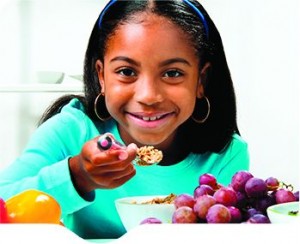 (NNPA) Back to school season can be a daily struggle for parents who pack lunches and make sure their kids have had something to eat before they dash out the door, but it will pay off if you make the effort, said a University of Illinois Extension nutrition and wellness educator.
(NNPA) Back to school season can be a daily struggle for parents who pack lunches and make sure their kids have had something to eat before they dash out the door, but it will pay off if you make the effort, said a University of Illinois Extension nutrition and wellness educator.
“Although any breakfast is better than no breakfast, making the extra effort to make it healthy might help your kids do better in school. Studies show that kids who eat a balanced breakfast have higher test scores and can concentrate better and solve problems more easily in class,” Leia Kedem said.
Children with healthier diets may also have fewer behavioral problems. Hunger itself can cause discomfort, crankiness, and outbursts in even the best-behaved kids, she noted.
“The nutritional value of meals can also make a difference. A breakfast low in fiber and protein, like sugary toaster pastries, can lead to a midmorning energy crash. This is because the carbohydrates are digested and absorbed quickly, causing blood sugar levels to dive after an initial spike. Other than sudden fatigue, kids may also experience headaches and irritability,” she said.
In contrast, a high-protein, high-fiber meal of scrambled eggs on a whole-wheat English muffin will digest more slowly, preventing hunger and keeping blood sugar levels on an even keel, Kedem said.
“Of course, this extends to lunch, dinner, and snacks as well. Eating right throughout the day will improve behavior both at home and at school. Kids will concentrate better both in the classroom at the kitchen table when it’s time for homework,” she added.
The question is, how do you get kids used to eating healthier? According to Kedem, the key is to get them involved, whether it’s picking out fruit at the supermarket or packing lunch together the night before.
“When kids make their own choices, they feel empowered and it can make eating right less of a struggle. Whether it’s at a meal or at snack time, have a variety of healthy options to choose from. For example, have kids choose from carrots, celery, or broccoli for a snack and ask whether they’d like ranch or Italian dressing for dipping,” she advised.
Kids will also be more likely to eat healthy when food is made fun. Make a rotating breakfast bar with oatmeal and toppings one day and yogurt with cut-up fruits, sliced nuts, and granola the next, she suggested.
“Think outside the box when it comes to the lunchbox. For younger kids, use cookie cutters to make fun shapes out of fruits like apples and melon or even make standard peanut butter and jelly sandwiches more exciting. For kids of all ages, deconstruct typical favorites into finger food,” she said.
For example, pack whole-grain crackers, tuna, grape tomatoes, and cheese cubes in a divided plastic container instead of a tuna and cheese sandwich, she advised.
“When it comes to dinner, let kids be involved in the planning. Make it a family activity to find new healthy meal ideas on recipe sites. If your child is more visual, scroll through pictures of healthy recipes on social media websites like Pinterest. Brainstorm new ways of preparing old favorites or pick an exotic vegetable to try each week,” she said.
Getting kids into the habit of cooking and eating well will set them up for success at school as well as later in life, she said. “Make good nutrition part of the back-to-school routine this year to kick off the academic year on the right foot and to have a healthier and happier family all year round.”
Special to the NNPA from the St. Louis American





Comments are closed.